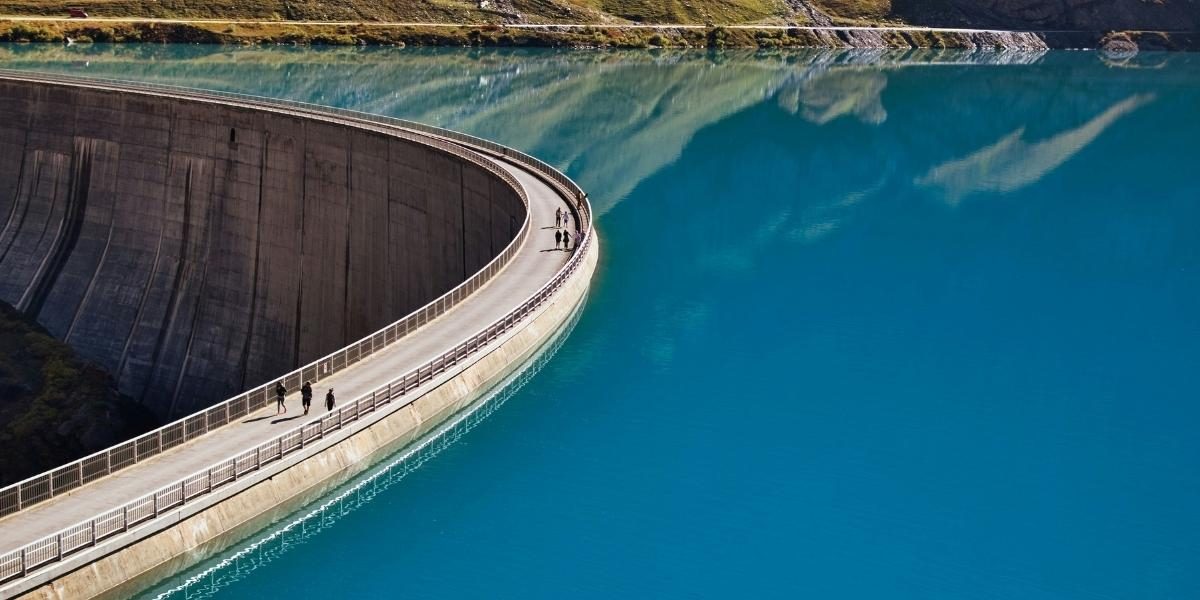Why Do Dams Hold More Than Just Water?
The presence of dams across landscapes is often taken for granted, yet these structures carry stories of ambition, resilience, and transformation. From powering cities to regulating rivers, dams are more than feats of engineering—they are testaments to how societies shape the natural world to serve their needs.
Across continents, dams have redirected water, enabled agriculture, prevented floods, and built the foundation for economic growth. The influence of these massive structures touches every layer of daily life, even for those who never see one in person.
Read Also: How the Gulf Stream Affects Weather and Ecosystems
How Did Ancient Civilizations Pave the Way for Modern Dams?
The concept of managing water through dams isn’t new. Civilizations as far back as Mesopotamia and Egypt constructed simple barriers to support farming and protect settlements. These early designs were built with earth and stone, using the most available materials at hand. Even with limited tools, their creators understood that controlling water meant controlling survival.
Over time, techniques advanced. In parts of Asia and the Middle East, builders began using brick, mortar, and complex spillway systems. These early adaptations laid the groundwork for the monumental projects that would define the 20th century and beyond.
Which Dams Have Redefined What Is Possible?
In more recent history, some dams have become symbols of national pride and technological achievement. The Hoover Dam, built during the Great Depression, turned the Colorado River into a force for industry and agriculture. Its construction employed thousands, fueling both energy production and economic morale.
Across the globe, the Itaipu Dam on the border of Brazil and Paraguay generates one of the largest outputs of hydroelectric power in the world. Its impact reaches millions, lighting homes and running industries that shape the regional economy.
Then there’s the Three Gorges Dam in China, a project so vast it reshaped entire ecosystems and communities. It remains one of the most debated and studied examples of modern engineering—praised for its output, questioned for its costs.
What Environmental Questions Do Dams Raise?
While dams offer many benefits, their environmental impact is significant. Changing the flow of rivers disrupts natural habitats, affecting everything from fish migration to soil fertility. Some dams flood entire valleys, submerging forests and villages, which can alter ecosystems for generations.
Scientists and environmentalists have raised concerns about the long-term sustainability of dam projects. Sediment buildup, changes in water temperature, and reduced flow downstream can all lead to issues that extend beyond the initial construction site. This has pushed governments and engineers to rethink how dams are designed, used, and decommissioned.
There is also growing interest in retrofitting older dams with new technology to reduce harm and improve efficiency. These upgrades can extend the usefulness of existing structures while aligning them more closely with today’s environmental priorities.
How Are Communities Shaped by the Presence of Dams?
For many communities, dams are deeply intertwined with identity and survival. They provide irrigation for crops, clean drinking water, and a barrier against seasonal floods. In some regions, life without a dam would be unimaginable.
Yet, the impact is not always positive. Large projects often require relocation, separating people from ancestral land and disrupting local cultures. Social scientists continue to examine how compensation, planning, and local input can be improved during dam development.
Some communities have turned their relationship with dams into opportunity. Tourism around famous dams can create jobs and foster regional pride. Visitors travel to see the scale, walk across viewing decks, and understand the science behind the structure. This adds another layer to how dams affect local economies.
Read Also: Stars and Their Life Cycle: What Really Happens in Space
What Is the Future of Dams in a Changing World?
As climate patterns shift, the future of dams becomes more complex. Extended droughts, melting glaciers, and unpredictable rainfall all challenge the way dams operate. Engineers now factor in these risks when planning new projects or managing existing ones.
There is also a global conversation about balancing development with conservation. Some countries have started removing outdated dams that no longer serve their original purpose, restoring rivers to their natural course. This movement reflects a deeper understanding of how to work with nature rather than simply redirect it.
Smaller, smarter dams are becoming more common, using automation and real-time data to adapt to conditions. These models focus on efficiency over size, signaling a new era where dams remain relevant—but differently shaped by the needs and values of the time.








